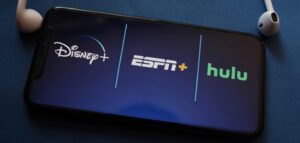This article is sponsored by Verizon Media.
The future of television is here, and it’s evolving by the day. That’s the narrative you’ve likely heard if you’re following the emerging market for over-the-top video (OTT) and connected television (CTV). Both have seen meteoric growth in 2020, with CTV advertising spend in the United States up 25% and revenue from advertising-based video-on-demand services (AVOD) up 31% according to eMarketer.
However, while revenue may be on the rise, advertiser adoption is not as widespread or evenly distributed as one might expect. A recent Verizon Media survey of 152 digital advertisers found that less than 40% of respondents spent ad budget on OTT and CTV last year, placing this emerging medium below desktop/mobile video (53%), display (65%) and social (77%). In fact, half of the advertisers surveyed reported that they still had no plans to increase OTT spend in H1 2021.
So, what’s holding advertisers back from investing in CTV and OTT? Unlike video, display and social formats, OTT is seen as a major financial and strategic investment due to higher CPMs and more complex measurement considerations. As OTT and CTV reach a critical inflection point amid rapid adoption in viewer homes, here are some things the industry can do to increase advertiser adoption and maximize this growing opportunity:
1. Flatten the waterfall
Programmatic display and video growth has been buoyed by the proliferation of header bidding and unified auction solutions, which in turn has allowed programmatic advertisers to better compete with reserved demand in the ad auction. This has the dual benefit of giving advertisers more opportunities to target and buy high-value impressions, while simultaneously enabling publishers to increase yield and revenue. In contrast, the CTV and OTT ad auction still relies on the antiquated, inefficient waterfall model. Fortunately, CTV and OTT publishers are quickly adapting.
These unified auction ecosystems, such as Verizon Media’s OTT Smart Auction, enable programmatic demand to compete fairly with reserved demand in auctions, creating more competition and stronger yields for publishers and increasing the amount of transparent CTV and OTT inventory for marketers.
2. Open up the walled gardens
While the bulk of longform video viewing takes place on connected televisions, more than 25% of viewing time still occurs on mobile phones, tablets and PCs. Advertisers expect to be able to target users across devices, platforms and publishers – and CTV provides a great opportunity to target desirable audiences. Unified ID solutions, such as Verizon Media’s ConnectID, make this possible by incorporating diverse data sets to find viewers wherever they are within the same DSP, greatly decreasing the amount of effort required to run CTV campaigns.
3. Don’t just show an ad. Invite an experience.
A focus on linear, TV-like ad experiences means CTV advertising is still the domain of brand advertisers. As options for measurement and interactivity continue to improve though, there are emerging opportunities to make CTV more attractive to direct advertisers. The opportunity for direct engagement is clear: 71% of CTV viewers are already using their mobile devices to look up related content while watching TV. In an effort to begin to bridge this gap, advertisers are testing interactive ad formats that feature scannable creative elements that leverage second screens to create more engaging and measurable experiences.
Connected TV offers the ability to connect with audiences on the scale of traditional television, while retaining the deep targeting and measurement capabilities of digital advertising. Despite these clear advantages, the format still has more hurdles to climb to win full adoption from advertisers. By taking steps to expand ease of access, transparency and measurement, the industry can accelerate the pace of adoption and ensure that advertisers and content publishers alike are able to benefit from this fundamental shift in consumer viewing habits.














